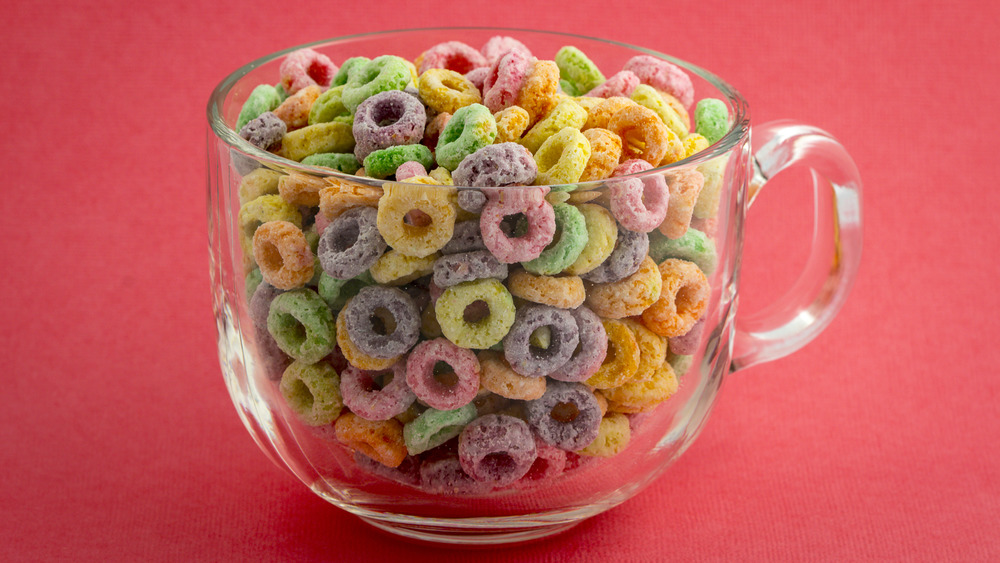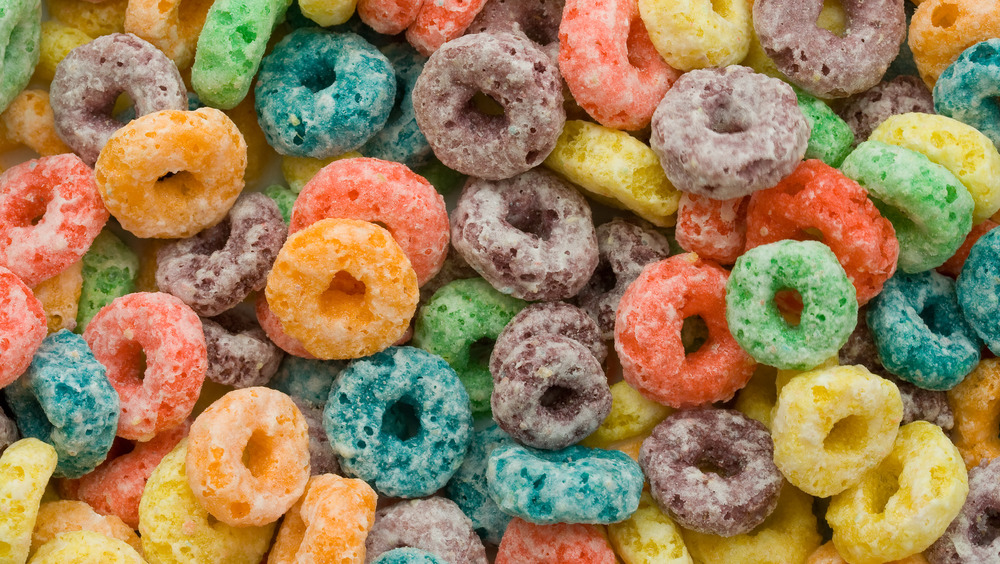You Should Avoid Having Froot Loops For Breakfast. Here's Why
Kellogg's iconic and beloved Froot Loops have been around for quite some time. Per Snack History, Toucan Sam and his colorful O-shaped cereal have enticed young kids shopping with their parents since it was first introduced to consumers in 1959, and it is still a favorite of both kids and kids at heart when it comes to breakfast cereals. But it might surprise you to learn that the Froot Loops you pour into your bowl today are not quite the same as the kind kids were pouring when the cereal was first introduced. In fact, there were only three different colors of those yummy O's in Froot Loops: red, orange, and yellow. The brand apparently didn't add the purple, blue, and green Froot Loops until the 1990s. How did we ever live without their fruity goodness?
Still, Froot Loops remain a convenient breakfast, lunch, or dinner food you can eat with or without milk when you are pressed for time. Per Statista, Froot Loops raked in over $270 million in sales in 2019, demonstrating that the sugar-laden cereals of our youth can still call to us like a siren covered in milk and holding a spoon, beckoning us to eat every colorful bite. But despite its tempting nature, you should resist eating Froot Loops for breakfast and here's why.
Froot Loops are full of sugar
If you grew up in the 1970s, you might remember the slogan that claimed cereal is part of a complete breakfast. That's a tough statement to believe these days when you consider all of the sugary kids' cereal on the market — Fruity Pebbles, Cookie Crisp, Cinnamon Toast Crunch, and the list goes on. It is a statement that is even more difficult to believe when it comes to Froot Loops. According to Cheat Sheet, a cup of vibrantly colored Froot Loops has 12 grams of sugar. That's a lot of sugar in what amounts to about a handful of cereal. In fact, Spoon University notes that Froot Loops are 44 percent sugar by weight alone. Yikes! Simply put, that's just too much sugar.
The Naked Label echoes this sentiment and shares that while a single serving may only have 12 grams of sugar, according to a study conducted by Yale University, kids are not likely to stop at just one serving. Instead, they are more likely to nosh down on two to three times more than the single-serving suggestion. Translation: your kid could experience a real sugar high, consuming anywhere from 24 to 36 grams of sugar in one sitting. According to the Harvard T.H. Chan School of Public Health, we should only consume 24 to 36 grams of added sugar per a whole day. So, at the end of the day, while we love this cereal as much as the next person, some childhood memories like Froot Loops are best remembered and not relived.

